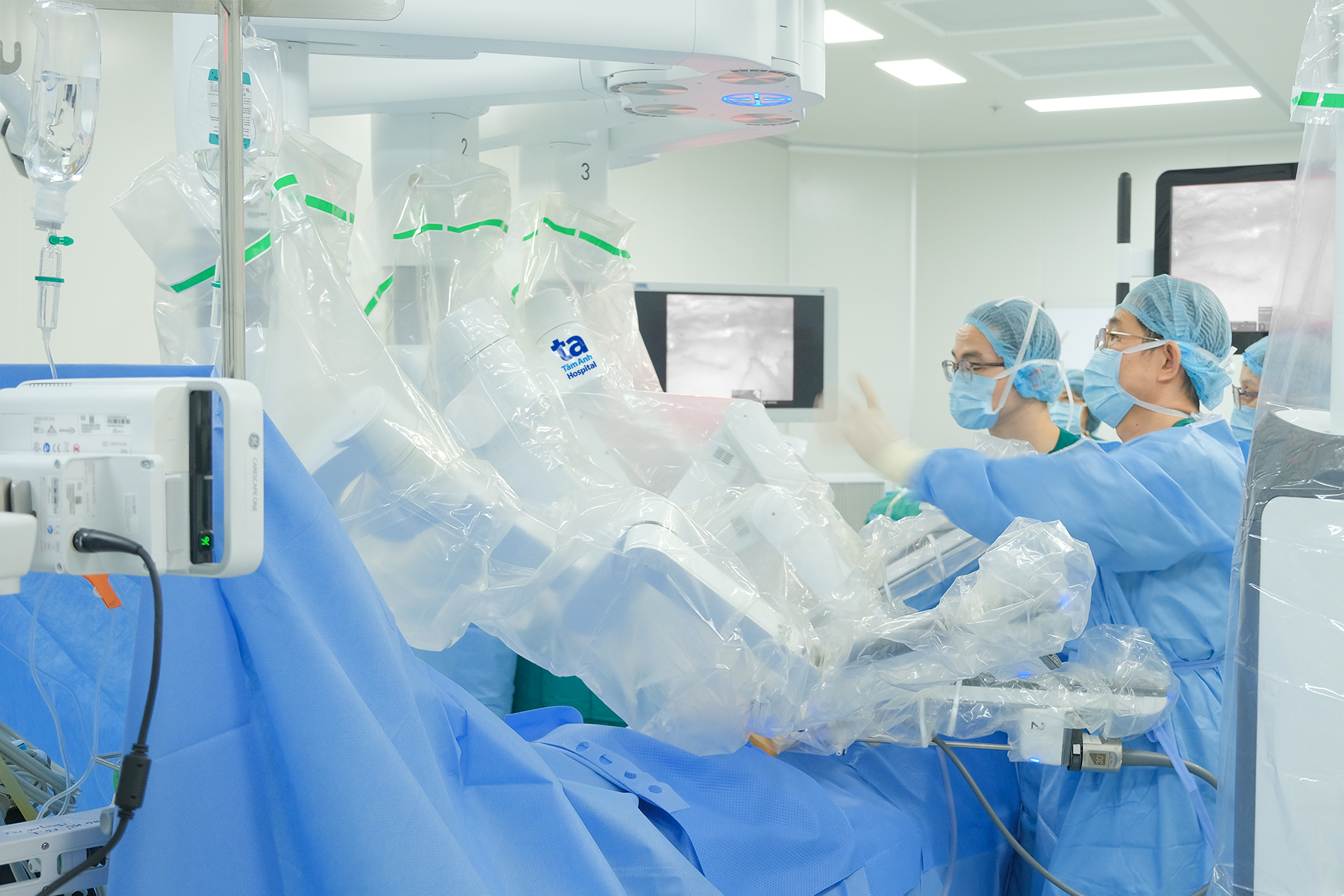A chest CT scan revealed a 43x23x29 mm tumor in Van's thymus. According to Dr. Le Chi Hieu of the Cardiothoracic and Vascular Surgery Department at Tam Anh General Hospital in Ho Chi Minh City, the incidence of this tumor is approximately 0.1-0.4 per 100,000 people. In newly diagnosed cases of myasthenia gravis caused by thymoma, surgery before treating the myasthenia gravis increases the risk of a myasthenic crisis leading to respiratory failure immediately after surgery. To mitigate this risk, doctors first treated Van medically. After three months, her eyelid drooping and hand tremors subsided, and she could walk short distances. The medical team then performed surgery to remove the thymoma.
Dr. Nguyen Anh Dung, Head of the Cardiothoracic and Vascular Surgery Department at Tam Anh General Hospital in Ho Chi Minh City, who also treated Van, assessed that although the tumor wasn't large, its location directly in front of the heart and near the aorta required meticulous dissection to avoid damaging these organs. The team opted for robotic surgery using the Da Vinci Xi system.
Four robotic arms were inserted through four small incisions in the patient's chest and abdomen. The lead surgeon controlled the robotic arms, maneuvering instruments deep into the thymus area to reach the tumor. The robotic arms provided exceptional dexterity. One arm controlled the camera, while the other three, equipped with technology that mimics human wrist movements, allowed the surgeon to change viewing angles within the surgical field. After nearly two hours, the entire tumor was removed without damaging the heart or major blood vessels.
 |
Doctors maneuvered robotic arms into the thymus area to remove the patient's tumor. Photo: Thanh Luan |
Doctors maneuvered robotic arms into the thymus area to remove the patient's tumor. Photo: Thanh Luan
A week later, the pathology report confirmed a type B2 thymoma (a low-grade malignant tumor) contained within the thymus. According to Dr. Dung, this type accounts for about 20% of all thymoma cases.
Van recovered quickly after surgery. Doctors reported an 80% improvement in her hand tremors and muscle weakness, and her eyelid drooping almost completely resolved. She was discharged after three days and will continue medication for myasthenia gravis for 6-12 months, with regular follow-up appointments to prevent recurrence.
The thymus is a small gland located in the upper chest, beneath the breastbone. Part of the lymphatic system, it produces white blood cells called lymphocytes that protect the body from infection. Thymomas can be benign or malignant (cancerous). Most patients with thymomas are asymptomatic in the early stages. Symptoms typically appear only when the tumor affects organs in the chest: tracheal compression causing difficulty breathing, esophageal compression causing difficulty swallowing, damage to the recurrent laryngeal nerve causing hoarseness, superior vena cava compression causing superior vena cava syndrome, or antibody production causing myasthenia gravis.
Thymomas can be completely removed through open or minimally invasive surgery. If the pathology report indicates malignancy, patients undergo chemotherapy, radiation therapy, immunotherapy, or targeted therapy to destroy cancer cells. Benign tumors require no further treatment but necessitate regular check-ups to detect any abnormalities.
Dr. Hieu cited studies showing that approximately 50% of myasthenia gravis cases are linked to the thymus. Myasthenia gravis is a chronic neuromuscular disease characterized by intermittent or continuous muscle weakness of varying degrees. Commonly affected muscles include skeletal muscles, facial muscles, chewing muscles, eye muscles, limb muscles, and respiratory muscles. Common causes of myasthenia gravis include thymomas, systemic lupus erythematosus, rheumatoid arthritis, Graves' disease, thyroiditis, and a family history of autoimmune disorders. Individuals experiencing symptoms such as drooping eyelids, double vision, or generalized muscle weakness should seek medical attention for diagnosis and timely treatment.
Thu Ha
*The patient's name has been changed.
| Readers can submit questions about cardiovascular diseases here for doctors to answer. |












